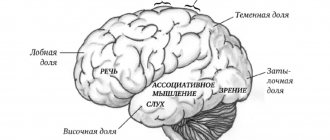What is a socio-psychological characteristic?
What is a socio-psychological characteristic? This is a set of social and psychological phenomena that explain the qualities, characteristics, properties of an individual, team, family, society, etc. Personal characteristics are determined by the psychological qualities of each component or social factors that influence it.
The characteristics of a group, family, team are determined by the psyche of each member, their relationships, common activities, religion, culture, upbringing, political situation and other factors.
Social psychology of personality: specifics of the approach
According to some concepts of general psychology, you can find out:
- in which groups the individual assimilates social influences and aspects through the development of his system of activity;
- in which communities and through what joint activities the social component is implemented.
The features of the socio-psychological approach are to study the process of formation of certain personality traits and study their manifestation in different conditions.
Objects of study are also considered:
- life position and personal attitudes;
- the presence of internal contradictions and the possibility of overcoming them;
- a person's ability to self-educate.
Social psychological phenomena are determined by the interaction of the individual, the group of which the person is a member and the social environment that surrounds him in life.
The environment that gives rise to a certain way of life, behavioral characteristics and direction of mental activity is formed by a set of socio-historical formations - historical, national, geographical, demographic.
Socio-psychological characteristics of personality
A personality is a person who has activity and consciousness that help him chart his path through life. Personality is formed as one lives. It is determined by the social factors in which it develops, the activities it produces, as well as the ways of consumption and acquisition of material goods. Socio-psychological characteristics are formed as a result of social interaction with other people, in which everyone influences each other.
The socio-psychological characteristics of an individual are also influenced by her anatomical and physiological capabilities, which shape her behavior and psyche. In addition, a person occupies a certain status in society, which influences the formation of specific skills and qualities in him.
Personal characteristics consist of characteristics, interests, views, inclinations and qualities of his psyche. What becomes significant is that a person does not have absolutely stable characteristics. In the process of life they change, transform or strengthen. It depends on the circumstances in which a person periodically finds himself, the activities he carries out, the attitude he displays towards the situation, and the position he occupies in a given situation.
A person is an individual because many of his characteristics are not innate. Only types of higher nervous activity can be genetically determined, but even they are subject to correction during life. No two people are the same, since different psychological characteristics develop from the same background.
The main thing in the formation of socio-psychological characteristics remains the life path, which is based on the worldview that guides the individual. Depending on the path of life, certain qualities and characteristics, interests and inclinations develop. All this begins with the family and social upbringing through which the individual goes.
Socio-psychological characteristics consider the following concepts in personality:
- Interests – what objects does a person pay attention to? They influence the focus and choice of life path. The more stable they are, the more focused the individual is and the more successful he is.
- Inclination is the direction of action in a certain type of activity.
- A need is a physiological need that provokes temporary interest, after satisfying which the need passes.
- Ability is a mental skill that ensures the successful performance of an activity.
- Giftedness is a set of inclinations on the basis of which certain abilities can be developed.
- Temperament is a combination of emotional excitability, manifestation of emotions and mobility.
- Character is a set of qualities and mental traits that influence the decisions and actions of an individual.
How can a person develop personality traits?
Personality formation begins from the first years of life. Subsequently, the quality can only be adjusted. Work should be carried out in several directions: from establishing body language to developing individual abilities that are a priority in the chosen profession.
Without an active life position, way of existence, direction of actions, control of emotions and desires, it is impossible to achieve the desired level of development. The formation of positive personality traits should be based on the development of intelligence and increasing the level of culture.
We need to start with self-analysis
There are several methods, the first step is always the same - analyzing your own state. It helps you decide on the qualities that should be developed. An adequate assessment of personal significance will help set a goal, decide on a role model and develop ways to achieve results.
You can’t do this without self-discipline and self-confidence. Forming yourself as an individual is a long process, but it is worth putting in the effort.
Social characteristics of personality
Personality is a social being. A person is not born as a person, but becomes one in the environment in which he grows and develops. As a person interacts with society, he acquires certain social characteristics. He plays out social roles and tries to adapt to society, which happens more or less successfully.
There are 2 social roles:
- Conventional - roles that are given by society, depending on social status: father, husband, boss, etc.
- Interpersonal – roles that depend on the personal characteristics of the individual.
A person's status is determined by the rights and responsibilities he has. In each group, a person occupies a certain role, where, first of all, he builds certain business or personal relationships. This is where his characteristics and qualities are formed, which then manifest themselves and characterize the person.
Social and psychological characteristics of the group
A person does not live separately from others. Sooner or later, he classifies himself as a member of a certain group - an association in which more than two people are united by interests, common goals, activities, motives, tasks, etc. A group is a single organism that includes individuals with their own socio-psychological characteristics . This, in turn, forms the characteristics of the group with its socio-psychological orientation.
Small groups play an important role in the life of every individual. Small groups are families, teams, friends, school classes or college groups. All of them include on average up to 30 people who are united by a common cause and goals, interests and views. Here there is a greater impact on each individual.
A group is a cell to which an individual is attached. One of its characteristics is the commonality on which people unite. Cohesion is the second socio-psychological characteristic.
The composition of a group is the qualitative composition, that is, the characteristics of its members. Size is the number of group members (that is, a quantitative characteristic).
In a group, two factors become important:
- Communication – its culture, manners, language, etc.
- The relationships between its members are morals and ethics, rules and norms.
Basic criteria for a psychological portrait of a personality - from temperament to self-esteem
The development of individuality continues throughout life. In management, we must remember that people adapt to life conditions differently. In individuality, basic and programming properties are distinguished. Let us briefly consider the main components that characterize the psychological portrait of a person.
Determining the psychological portrait of an individual is one of the most difficult and important issues, the solution of which will improve the success of personnel management. Let us present some provisions that define the psychological portrait of an individual, based on the basic idea of management psychology: treating a person poorly is unprofitable.
In managing people, we must remember that people adapt to life conditions in different ways. Based on their ability to adapt, three types of people can be distinguished:
- With an orientation to the current moment and easy adaptability to the situation.
- With a focus on the past, the ability to act within a rigid structure with clear permissions and prohibitions, rights and responsibilities.
- With a focus on the future, behavior inappropriate to the situation, poorly adapted to the hierarchical structure.
The first type of people works better when making decisions, the second - when implementing them within the framework of existing structures, the third - as generators of ideas.
It is important for every leader to be able to reveal their internal psychological reserves. To do this, you need to learn to know yourself and other people, identify temperament, character, personality orientation, attitude to activity and life, goals and life situations, expected emotional behavior in tense situations and interpersonal relationships, business qualities.
In individuality, basic and programming properties are distinguished. The basic ones include temperament, character, and human abilities. It is through the basic properties that the dynamic characteristics of the psyche are revealed (emotionality, rate of reactions, activity, plasticity, sensitivity) and a certain style of behavior and activity of the individual is formed. Basic properties are an alloy of innate and acquired personality traits in the process of education and socialization.
The main driving force for the development of individuality is its programming properties - direction, intelligence and self-awareness. Individuality has its own internal mental world, self-awareness and self-regulation of behavior, which develop and act as organizers of the behavior of the “I”.
Based on an assessment of a person’s properties, it is possible to create a psychological portrait of the person, which includes the following components:
- temperament;
- character;
- capabilities;
- direction;
- intelligence;
- emotionality;
- strong-willed qualities;
- ability to communicate;
- self-esteem;
- level of self-control;
- ability for group interaction.
The development of individuality continues throughout life. With age, only a person’s position changes - from an object of education in the family, school, university, he turns into a subject of education and must actively engage in self-education. Let us briefly consider the main components that characterize the psychological portrait of a person.
Temperament
Observing other people, how they work, study, communicate, experience joy and sorrow, we undoubtedly pay attention to the differences in their behavior. Some are fast, impetuous, mobile, prone to violent emotional reactions, others are slow, calm, imperturbable, with imperceptibly expressed feelings, etc. The reason for such differences lies in a person’s temperament, inherent in him from birth.
The founder of the doctrine of temperament is the ancient Greek physician Hippocrates (V-IV centuries BC), who believed that there are four main fluids in the human body: blood, mucus, bile and black bile. The names of temperaments, given by the names of liquids, have survived to this day: choleric , comes from the word “bile”, sanguine - from the word “blood”, phlegmatic - mucus and melancholic - black bile. Hippocrates explained the severity of a certain type of temperament in a particular person by the predominance of one or another liquid.
In modern psychology, the word “temperament” denotes the dynamic features of the human psyche, i.e. only the pace, rhythm, intensity of mental processes, but not their content. Therefore, temperament cannot be defined by the word “good” or “bad.”
Temperament is the biological foundation of our personality; it is based on the properties of the human nervous system and depends on the structure of the human body and metabolism in the body. Temperament traits are hereditary and therefore extremely difficult to change.
Temperament determines a person’s style of behavior and the methods a person uses to organize his activities. Therefore, when studying the traits of temperament, efforts should be directed not at changing them, but at understanding the characteristics of temperament in order to determine the type of human activity.
Temperament types:
A sanguine person is the owner of a strong type of nervous system (that is, nervous processes are strong and durable), balanced, mobile (excitation is easily replaced by inhibition and vice versa); Choleric is the owner of an unbalanced type of nervous system (with a predominance of excitation over inhibition); Phlegmatic - with a strong, balanced, but inert, immobile type of nervous system; Melancholic - with a weak, unbalanced type of nervous system.
You need to find your own approach to a representative of each type of temperament based on certain psychological principles:
1. “Trust, but verify.” This suits a sanguine person, who has the following advantages: cheerfulness, enthusiasm, responsiveness, sociability - and disadvantages: a tendency to arrogance, scatterbrain, frivolity, superficiality, over-sociability and unreliability. A nice sanguine person always promises so as not to offend another, but he does not always fulfill his promise, so you need to check whether he has fulfilled his promise.
2. “Not a moment of peace.” This is the principle of the approach to a choleric person. The principle is based on the use of its advantages: energy, enthusiasm, passion, mobility, determination - and the neutralization of its disadvantages: hot temper, aggressiveness, lack of self-control, intolerance, conflict. A choleric person must be busy all the time, otherwise he will direct his activity towards the team and can corrupt it from the inside.
3. “Don’t rush.” This should be the approach to a phlegmatic person who has the advantages: stability, constancy, activity, patience, self-control, reliability - and the disadvantages: slowness, indifference, “thick skin,” dryness. The main thing is that a phlegmatic person cannot work under time pressure, he needs an individual pace, so there is no need to rush him, he will calculate his own time and get the job done
4. “Do no harm.” This is the motto of a melancholic person, which has advantages: high sensitivity, gentleness, humanity, goodwill, the ability to sympathize - and, of course, disadvantages: low performance, suspiciousness, vulnerability, isolation, shyness. You shouldn’t shout at a melancholic person, put too much pressure on them, or give sharp and harsh instructions, as they are very sensitive to intonation and very vulnerable.
In fact, it is difficult to meet a person who fully corresponds to a certain type of temperament; one of them is dominant.
More on the blog: New study - alcohol is harmful to the brain even in moderation
Purely formally, without taking into account the specifics of each individual, when organizing working pairs, one can proceed from the following principle: it is easiest for a choleric person to work with a sanguine person, for a sanguine person - with a melancholic person, and for a melancholic person - with a phlegmatic person.
If you are a sensitive melancholic person, then you are a wonderful friend; if you are a phlegmatic person, then your loved ones, friends and subordinates can hide behind you, “like behind a stone wall,” because you are very reliable; If you are a choleric person, then you can hope for the success of your life path, since you are good at setting goals and achieving them. Well, if you are sanguine, then warm sunlight emanates from you, which is also what people need in our lives.
Character
Character is a set of stable individual characteristics of a person that develop and manifest themselves in activity and communication, determining the typical modes of behavior for that person. Those personality traits that relate to character are called character traits.
Character traits are not random manifestations of personality, but stable features of human behavior, features that have become properties of the personality itself. Character expresses not random, but the most typical, essential features of a person.
In the character structure, there are 4 groups of traits that express the individual’s attitude towards a certain aspect of activity:
- to work (for example, hard work, a penchant for creativity, conscientiousness in work, responsibility, initiative, perseverance and the opposite traits - laziness, a tendency to routine work, irresponsibility, passivity);
- to other people, the team, society (for example, sociability, sensitivity, responsiveness, respect, collectivism and their opposites - isolation, callousness, callousness, rudeness, contempt, individualism);
- to oneself (for example, self-esteem, correctly understood pride and the associated self-criticism, modesty and their opposites - conceit, sometimes turning into vanity, arrogance, resentment, egocentrism, selfishness);
- to things (for example, neatness, thrift, generosity or, on the contrary, stinginess, etc.)
The core of the formed character is the moral and volitional qualities of the individual. A person with a strong will is distinguished by certainty of intentions and actions and greater independence. He is determined and persistent in achieving his goals.
Lack of will in a person is usually identified with weakness of character. Even with a wealth of knowledge and a variety of abilities, a weak-willed person cannot realize all his potential.
Karl Leonhard identified 4 types of character: demonstrative, pedantic, stuck, excitable.
Demonstrative type , which got its name because of the ability of people of this type to express their emotions very strongly, from the point of view of others - more strongly than they are experiencing them at the moment. A demonstrative personality has a developed ability to repress some traumatic ideas from consciousness: she can lie without realizing that she is lying, while the lies of a demonstrative personality differ from the conscious lies of a pretending person.
She is not pretending, but really at the moment believes in what she is trying to convince others of. A demonstrative personality deeply adapts to the image required by the situation, and is characterized by high artistry in expressing any feeling: grief, admiration, etc.
The favorite images into which a demonstrative personality is reincarnated are an innocent victim, a person who was not appreciated, his trust was abused, his rare spiritual and intellectual qualities were used, etc., or a benefactor of humanity, a unique specialist, a gentle, subtle creature in need of tireless care .
With positive social development, a demonstrative personality can become an excellent writer, actor, social worker - thanks to the ability to get used to another image, to understand another person.
The opposite of demonstrative is pedantic . If a demonstrative person makes decisions quickly, impulsively, the thinking process is reduced to a minimum, then a pedantic person hesitates for a long time and carefully thinks about his actions.
Negative traits of this nature may be indecision, fear of an accident or mistake, which makes it necessary to constantly check and double-check your actions whether the gas is turned off, whether there is an error in the report, whether your hands are dirty, etc., unless, of course, these are isolated cases, and sustainable behavior.
But, as you know, our virtues are a continuation of our shortcomings, and a pedantic character can be expressed in such excellent qualities as punctuality, accuracy, responsibility, forethought, prudence, concern for one’s own health, avoidance of excesses - in a word, the whole complex that a demonstrative personality clearly lacks lacks.
The next type of character is stuck. People of this type are characterized by a very long delay in strong feelings (affects) of rage, anger, fear, especially when they were not expressed in real life due to some external circumstances. This affect may not fade and flare up with its original brightness after weeks, months, even years.
A stuck person experiences his successes just as long and vividly. People of this type are distinguished by touchiness and vindictiveness. The most common “ideas” and themes of stuckness are: jealousy, persecution, revenge. These people can say about themselves: “I can forgive an insult, but not forget it.”
Excitable individuals, just like demonstrative and stuck ones, often have a very uneven course of life, but not because they constantly avoid difficulties, but because they often express dissatisfaction, show irritability and a tendency to impulsive actions, without bothering to weigh the consequences . The inability to manage oneself leads to conflicts.
Capabilities
Ability in psychology is considered as a special property of a psychological functional system, expressed in a certain level of its productivity. Quantitative parameters of system productivity: accuracy, reliability (stability), speed of operation. Abilities are measured by solving problems of a certain level of difficulty, resolving situations, etc.
The level of abilities is determined by the degree of resolution of contradictions between the properties of an individual and the relationships of the individual. The best option is when you have abilities in any field of activity and an interest in doing it.
Abilities are divided into general and special. General abilities can predetermine a tendency to a fairly wide range of activities; they are formed by the development of intelligence and personality traits.
General abilities include:
- readiness to work, the need to work, diligence and high efficiency;
- character traits - attentiveness, composure, focus, observation;
- development of creative thinking, mental flexibility, ability to navigate in difficult situations, adaptability, high productivity of mental activity.
More on the blog: About equality
General ability acts as a socio-psychological basis for the development of special abilities for a certain type of activity: musical, research, teaching, etc.
Personality orientation
The basis of a person’s orientation is the motivation of his activities, behavior, and satisfaction of needs. Focus can be on the task, on communication, on oneself. One person can satisfy only physiological needs and ensure the security of existence.
For others, in addition to these needs, it is very important to satisfy social needs and the needs for self-expression and the realization of creative abilities. The task of the manager and psychologist is to identify the needs, interests, beliefs of each individual and determine the specific direction of his motives.
Intelligence
Soviet psychologist S.L. Rubinstein considered intelligence as a type of human behavior - “smart behavior”. The core of intelligence is a person’s ability to identify essential properties in a situation and bring his behavior into line with them. Intelligence is a system of mental processes that ensure the implementation of a person’s ability to assess a situation, make a decision and regulate his behavior in accordance with this.
Intelligence is especially important in non-standard situations - as a symbol of a person’s learning everything new.
The French psychologist Jean Piaget considered one of the most important functions of intelligence to be interaction with the environment through adaptation to it, that is, the ability to navigate conditions and structure one’s behavior accordingly.
Adaptation can be of two types: assimilation - adapting a situation through changing conditions to a person, his individual style of mental activity, and accommodation - adapting a person to a changing situation through a restructuring of his thinking style.
Intelligence can also be defined as the general ability to act expediently, think rationally, and function effectively in the environment (Wechsler).
The structure of intelligence depends on a number of factors: age, level of education, specifics of professional activity and individual characteristics.
In addition to cognitive intelligence, there is professional and social intelligence (the ability to solve problems of interpersonal relationships, find a rational way out of the current situation). It should be remembered that intelligence is cognition plus action. Therefore, it is necessary not only to develop all types of intelligence, but also to be able to implement rational decisions, show your intelligence both in words and in deeds, since only the result, specific actions determine the level of intelligence of an individual.
Emotionality
Since the time of Plato, all mental life has been divided into three relatively independent entities: mind, will and feelings, or emotions.
The mind and will are to some extent subordinate to us, but emotions always arise and act independently of our will and desire. They reflect the personal significance and assessment of external and internal situations for a person’s life in the form of experiences. This is the subjectivity and involuntary nature of emotions.
The ability to manage emotions most often means the ability to hide them. It’s a shame, but pretends to be indifferent; it hurts, but it is hidden; It’s offensive, but outwardly there’s only irritation or anger. We may not show our emotions, but this does not weaken them, but more often they become even more painful or take on a defensive form of aggression.
Managing emotions is simply necessary, firstly, for health, and secondly, out of ambition. All emotional phenomena are divided into affects, emotions themselves, feelings, moods and stress states.
The most powerful emotional reaction is affect. It captures a person entirely and subjugates his thoughts and actions. Affect is always situational, intense and relatively short-lived. It occurs as a result of some strong (objective or subjective) shock.
Emotions themselves are a longer-term reaction that arises not only as a reaction to accomplished events, but mainly to anticipated or remembered ones. Emotions reflect an event in the form of a generalized subjective assessment.
Feelings are stable emotional states that have a clearly defined objective character. These are relationships to specific events or people (possibly imaginary).
Moods are long-lasting emotional states. This is the background against which all other mental processes take place. Mood reflects a general attitude of acceptance or non-acceptance of the world. The prevailing moods of a given person may be related to his temperament.
Stress is a nonspecific reaction of the body in response to an unexpected and stressful situation. This is a physiological reaction, which is expressed in the mobilization of the body's reserve capabilities. The reaction is called nonspecific, since it occurs in response to any adverse effect - cold, fatigue, pain, humiliation, etc.
Ability to communicate
Communication is an extremely subtle and delicate process of interaction between people. In communication, the individual characteristics of all participants in this process are revealed in the most diverse way. Communication has its own functions, means, types, types, channels, phases.
The most obvious function of communication is the transmission of some information, some content and meaning. This is the semantic (notional) side of communication. This transmission affects a person’s behavior, actions and deeds, the state and organization of his inner world. In general, we can distinguish informational (obtaining information), cognitive, control and developmental functions of communication, the function of exchanging emotional and generally mental states.
Means of communication can be verbal (speech in different forms) and non-verbal (pantomime, facial expressions, gestures, etc.)
Types of communication: communication between two (dialogue), communication in a small group, in a large group, with the masses, anonymous communication, intergroup communication. The listed types relate to direct communication.
Communication channels: visual, auditory, tactile (touch), somatosensory (feelings of your body).
Types of communication: functional-role (boss - subordinate, teacher - student, seller - buyer), interpersonal, business, rapport (communication with one-sided trust - the patient trusts).
Phases of communication: planning, making contact, concentrating, motivational sounding, maintaining attention, argumentation, recording the result, completing communication.
Self-esteem
Based on self-knowledge, a person develops a certain emotional and value-based attitude towards himself, which is expressed in self-esteem. Self-esteem involves assessing your abilities, psychological qualities and actions, your life goals and opportunities to achieve them, as well as your place among other people.
Self-esteem can be underestimated, overestimated and adequate (normal).
Author: Rais Akhmetovich Fatkhutdinov, Doctor of Economics, Professor of RAGS and Russian State University of Innovative Technologies and Entrepreneurship.
Source
Read our classified materials
Social and psychological characteristics of the team
A developed group becomes a team, in which stable norms of relationships have already been formed, and socially useful areas of activity are also noted. Each member has his own position, status, type of activity that he performs, tasks, etc. We can talk about the presence of a hierarchy within the team, where there are higher and lower substructures. If we talk about the socio-psychological characteristic, then it is no longer the collective that is formed, but the collective that is subordinate to it.
The characteristics of the team are:
- Public mood.
- Public opinion, attitudes, beliefs.
- Collective traditions, customs, habits.
- Public feelings.
- Requirements, authority and mutual assessments.
The team already has established rules and regulations. However, this does not mean that a person cannot express himself within this framework. Relationships between team members are established individually, but they rarely go beyond the established rules.
The main characteristics of the socio-psychological orientation of the team are:
- Discipline is the determination of the behavior of each member in order to organize a unified mechanism of action within the team.
- Awareness is the presence of all the information that allows everyone to pursue a common goal and set the necessary tasks.
- Organization is the flexibility of the team to external changes that influence the change in the course of events.
- Activity is the free expression of one’s activity by each individual.
- Cohesion is a unifying component of a psychological nature that allows a team to maintain its structure and be a single mechanism.
A retreat into history
Until the beginning of the twentieth century, social psychology as such did not exist. There was a social philosophy that sought to explain the patterns of human behavior in society, reveal the full nature of conflicts in the social environment, and identify centers of influence.
According to G. Tarde (1843-1904), the development of society depends on the mutual influence of individuals within it through imitation. For example, dressing in the same style as celebrities and behaving the same way. Imitation helps determine the values, customs and norms of behavior in a particular society of which a person is a part. Thanks to the research of G. Tarde, the concept of heredity acquired a new interpretation. In addition to natural, a definition of social heredity also appeared.
But the French sociologist and psychologist G. Lebon (1841 - 1931), studying the emotional component of all social processes, introduced a new concept of mental infection. In other words, a person on a subconscious level, through emotional perception, adopts the basic line of behavior from the social group with which he interacts - lives, works or communicates.
Another founder of social psychology is E. Durkheim (1858-1917), the founder of the social school in France. He explained the principle of human behavior as a consequence of collective consciousness.
Further research supplemented and clarified, clarified and highlighted the main points in the general concepts of social psychology. But the main idea remained unchanged - all changes in society, society, have a huge impact on the development of the individual. And the personality, as a component of society, interacting with others through emotions, thoughts or actions, influences the development of the social layer.
Social and psychological characteristics of the child
The characteristics of a child are determined by the types of activities in which he develops and grows. First of all, attention is drawn to the socio-psychological structure of the family, which can be complete or incomplete, prosperous or dysfunctional. Preschool children are determined by their interactions with the children around them, as well as by communication within the family. School-age children are characterized by academic success.
Other characteristics are the physiological components of the child: his health, congenital diseases, inclinations. The child’s communication skills and interaction with peers, teachers and caregivers are also assessed.
At an early age, a child learns about the world. How he imagines him at the end of this period largely depends on his upbringing and role models, which are his parents. Here he copies his parents.
In the primary school period, the child is exposed to voluntary behavior, which is often subordinated to selfish desires. It is important here that the child has an adequate understanding of the correctness of the actions being performed. The child is more susceptible to outside influence and is determined by social roles.
In adolescence, a desire for self-determination arises in the spheres of religion, profession, personality, spirituality, society, etc. In adolescence, a person begins to form his social status, which needs respect from others.
Main research objectives
Social psychology affects the main aspects of social life and is an integral part of it. To understand the essence of the interaction and influence of society and the individual, one should study and analyze all the phenomena and problems that arise during interaction.
The tasks of social psychology include identifying, researching and analyzing the main problems that arise in a particular society. Racism, feminism or interracial or intercultural problems - the study of these phenomena is the main task of social psychology.
Social psychology of personality studies the main problems that arise when an individual enters a certain society. How the behavior of one individual affects a social group and how the structure of the group changes from this. In the process of socialization, socio-psychological adaptation of the individual occurs, that is, a person adapts to the norms of behavior and values of the society of which he becomes a part.
To establish relationships with people who belong to the same social group, you need to understand, analyze and adjust your behavior to a generally accepted pattern. Most often this happens on a subconscious level. A person begins to copy common behavioral traits without even thinking about it.
Adaptation is much more difficult if a person and society have discrepancies in defining values or there is inconsistency in opinions or views on certain things.
The socio-psychological climate is very important for adaptation. If a social group exists in peace and harmony, then the entry of a new person will go smoothly and without unnecessary problems. Otherwise, any tension in relationships within the group will negatively affect the individual’s abilities and his interaction with the group.
Social and psychological characteristics of the family
The main institution and unit of society is the family, which is characterized by the main socio-psychological feature - communication on 3 levels:
- Communication between spouses.
- Communication between parents and children.
- Communication between spouses and each other's parents and friends.
The family first begins in the form of marriage, then children are born, who eventually leave, leaving the “nest empty.” These are the stages of family development. And communication consists of closeness, sincerity, and the opportunity to discuss problems with other family members.
The family performs the following functions:
- Raising a new generation and passing on cultural experience to it.
- Preserving the health of each member, caring for others.
- Financial support and support for those who cannot or have not yet reached working age.
- Spiritual development of each member.
- Development of leisure, its enrichment.
- Determination of the social status of each member.
- Psychological protection and emotional support.










